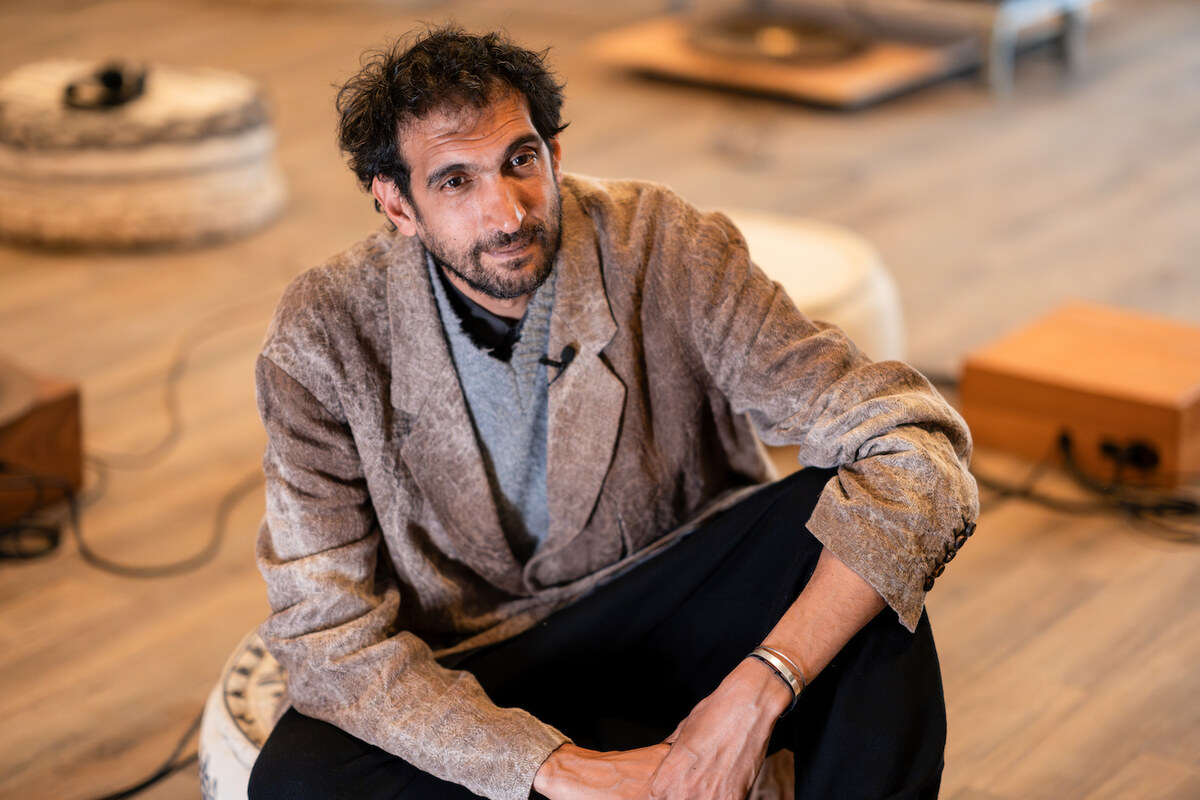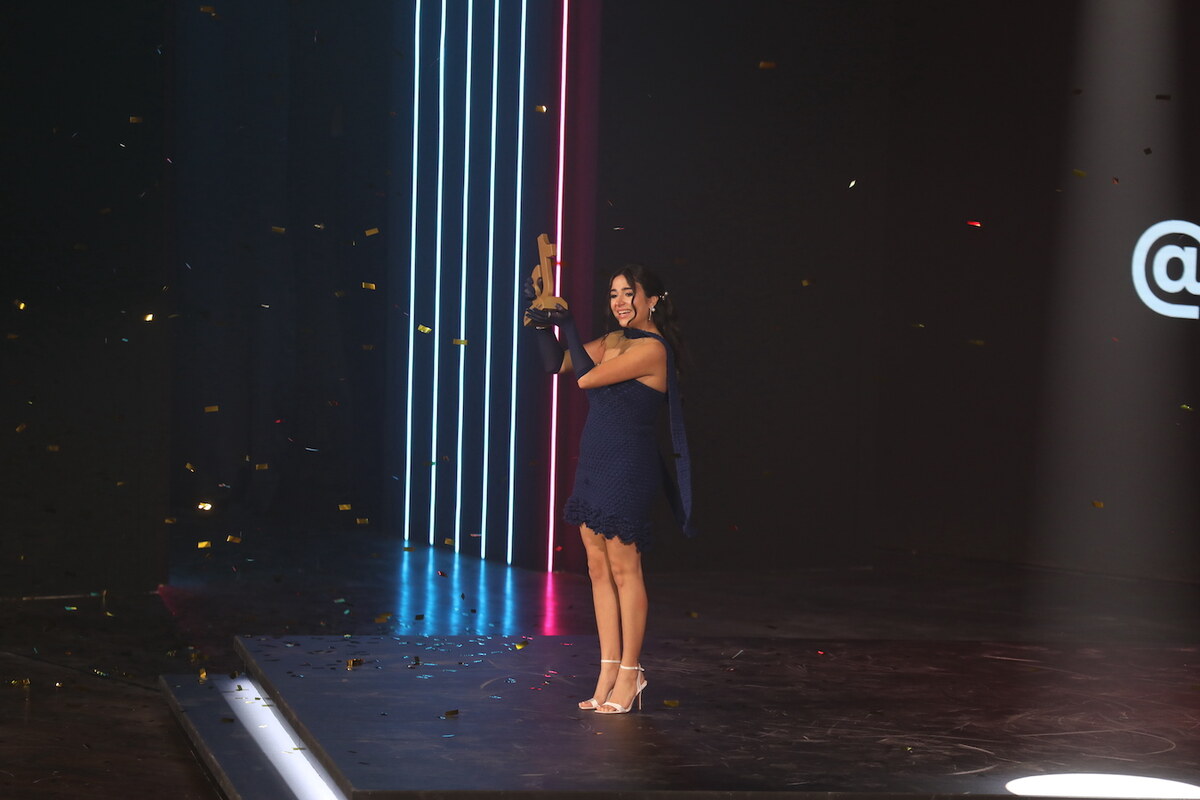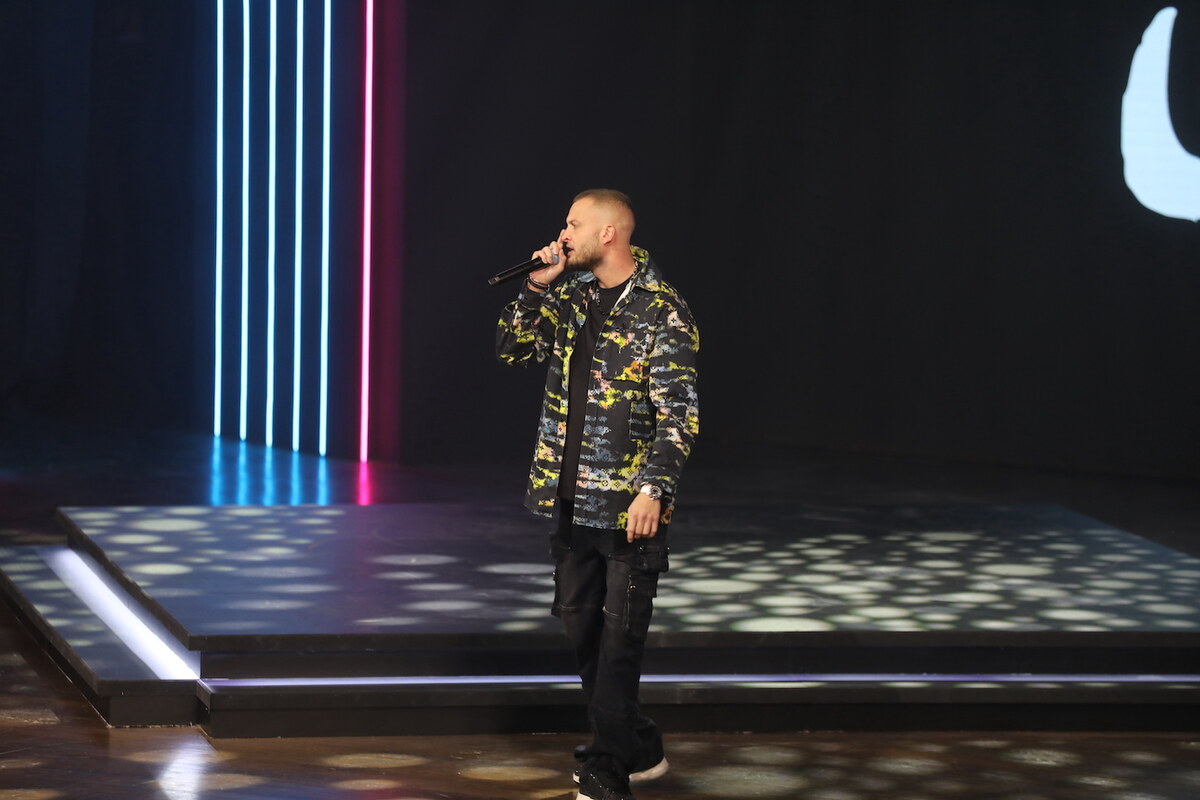JEDDAH: The second edition of the Diriyah Islamic Arts Biennale begins today, showcasing more than 500 “historical objects and contemporary artworks” across five exhibition halls and outdoor spaces.
This year’s theme is “And All That Is In Between,” a phrase the organizers say “encapsulates the vast and awe-inspiring scope of God’s creation as experienced by humankind.”
Over the next four months, the event will, according to the website, present “a profound exploration of how faith is lived, expressed, and celebrated … inviting visitors to reflect on the divine’s wonders and humankind’s connection to it.”

Abdelkader Benchamma's 'Au Bord des Mondes' on display at the Pompidou Center in Paris this year. (Supplied)
The biennale will include new commissions from more than 30 artists, both local and international. The most prominent Saudi artist on the roster is Ahmed Mater, who was the subject of a mid-career retrospective — “Chronicles” — at Christie’s in London last year. Participation in a biennale such as this fits with Mater’s philosophy. In 2020, he told Arab News: “I see exploration, sharing and learning between cultures as vital. Culture is about sharing and progress. It is not static; it is dynamic.”
Mater’s fellow Saudi artist, the printmaker and educator Fatma Abdulhadi will also be presenting works at the biennale. Her prints, she told the Berlin Art Institute in 2021, consist of “layer upon layer of deeper meanings which are expressed through the use of color. Each layer of color is a mirror that allows you to see the others clearly and accept them for what they are.”
Saudi contemporary interpretive dancer Bilal Allaf told Arab News in 2021 why he prefers his improvisational approach to classical dance. “I feel I can express my emotions better,” he said. “I think it’s a pure art form of storytelling — a form of non-verbal communication. As a performer it’s a very profound expression.”
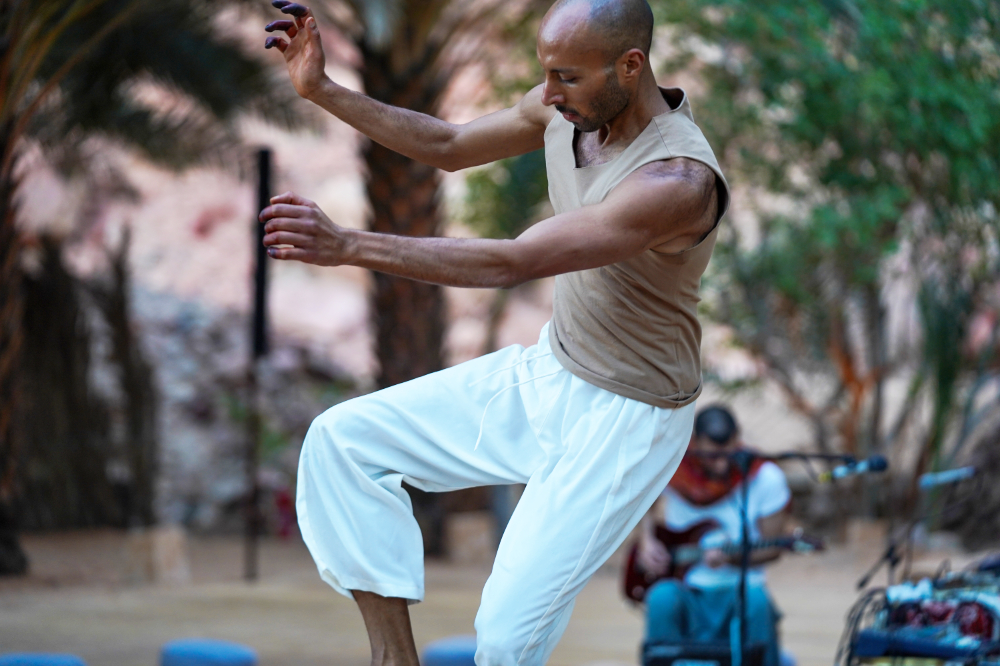
Bilal Allaf. (Supplied)
Bahraini-American artist Nasser Alzayani was the winner of Louvre Abu Dhabi’s inaugural Richard Mille Art Prize in 2021. His practice, the Louvre said at the time, “is a research-driven documentation of time and place through text and image.” Alzayani told Canvas the following year: “I see the work that I’m making as a way of adding to the resources available.”
Makkah native Ahmad Angawi is, according to art collective Edge of Arabia, “inspired by the colorful diversity of the culture of Hejaz.” He is the son of an architect, and has “adopted the concept of … the belief in the fundamental principle of balance, as a state of mind, as well as the belief in its application in the field of design.”
Abdelkader Benchamma, born in France to Algerian parents, creates “delicately executed and dynamic drawings of states of matter,” Edge of Arabia’s website states. “His drawings take their inspiration from visual scenarios that stem from reflections on space and its physical reality.”
Abha native Saeed Gebaan is an industrial engineer by trade, and a co-founder of PHI Studio. “Through installations, programming and movement systems, Gebaan invites viewers to consider the intersection of science and society,” according to Riyadh Art.

Nasser Alzayan, Seeing Things. (Supplied)
Louis Guillaume uses found materials to create his sculptures and “sees his creations as living works destined to evolve over time,” the website of Paris’ Cité International Des Artes states.
The work of Lebanese multidisciplinary artists Joana Hadjithomas and Khalil Joreige has covered film, photography, sculpture, installations, performance lectures and texts. They have written that they “question storytelling, the fabrication of images and representations, the construction of imaginaries, and the writing of history.”
Jeddah-based visual artist Bashaer Hawsawi works with mixed media and found objects. Her practice, according to theartists.net, is centered around “notions of cultural identity, cleansing, belonging and nostalgia.”
Libyan artist Nour Jaouda, the Venice Biennale website states, “relishes in the slow, physical, and felt processes of fabricating hand-dyed textiles. (Their) inherent connectivity begets their association with the eternal and the divine; to the artist, textiles have no beginning or end.”
Lebanese-French interdisciplinary artist Tamara Kalo was raised in Riyadh. “She works with photography, video and sculpture to investigate narratives that shape home, history and identity,” Riyadh Art states.
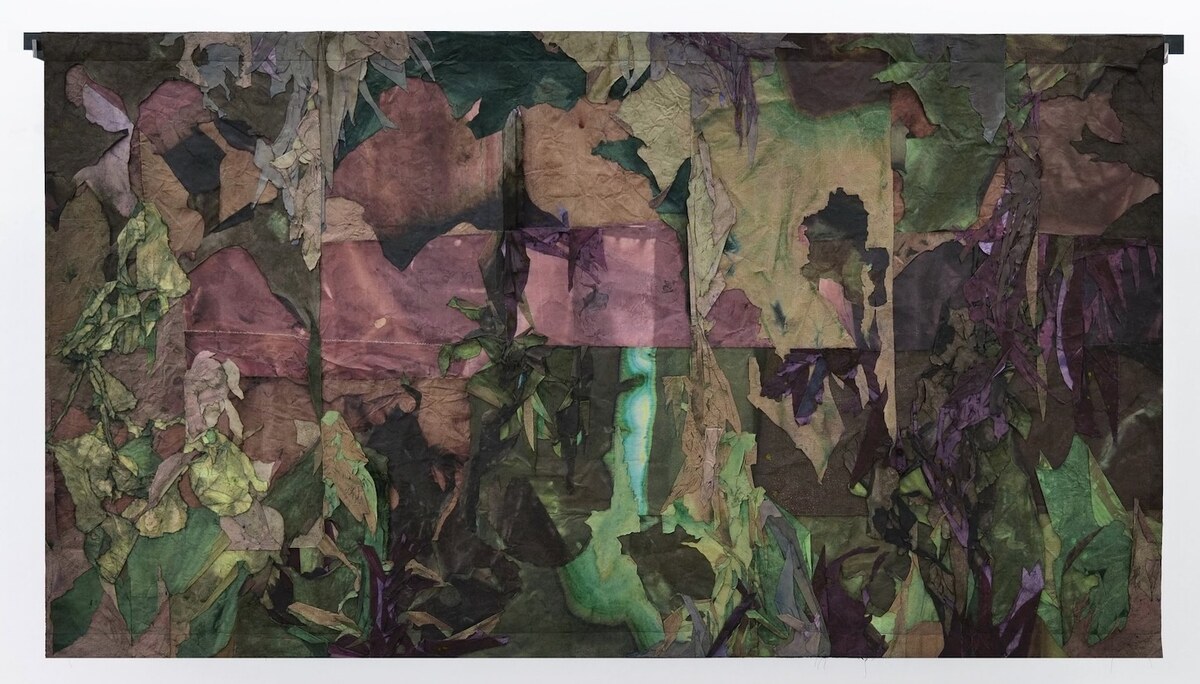
Nour Jaouda's 'The Light In Between'. (Supplied)
Raya Kassisieh is a London-based artist of Palestinian heritage who says she “explores the politics of the body in a multidisciplinary practice that presents a deeply personal interrogation of form.” Her work “proposes that the body is the ultimate tool for reimagination and creation.”
The Japanese artist Takashi Kuribayashi creates large-scale installations. The central theme of his work, he has said, is the “invisible realm” and its boundary. “The truth resides in places that are invisible. Once you are aware that there is a different world out of sight, you will be living in a different way.”
Saudi photographer and filmmaker Hayat Osamah “seeks to challenge conventional norms and celebrate diversity,” Riyadh Art states, while Jeddah-born multidisciplinary artist Anhar Salem also works primarily in film, often using phone-shot videos “to question self-representation and image production in communities that have been marginalized as a result of migration and economic policies,” according to Cité International Des Artes.
This year’s roster also includes Argentinian artist Gabriel Chaile; Amman-based Kuwaiti artist and curator Ala Younis; Asim Waqif, an Indian artist based in New Delhi; Taiwanese multidisciplinary artist Charwei Tsai; Lahore-based duo Ehsan ul Haq and Iqra Tanveer; Eurasian art collective Slavs and Tatars; Italian visual artist Arcangelo Sassolino; British architect and multidisciplinary artist Asif Khan; French-Iraqi artist Mehdi Moutashar; German-Iranian photographer and sculptor Timo Nasseri; Multimedia poet-musician duo Hylozic/Desires (Himali Singh Soin and David Soin Tappeser); Colombian multidisciplinary artist Nohemi Pérez; Pakistani artist Imran Qureshi, whose work is inspired by the miniature paintings of Mughal courts; Brazilian artist Lucia Koch; and the British interdisciplinary artist Osman Yousefzada.








